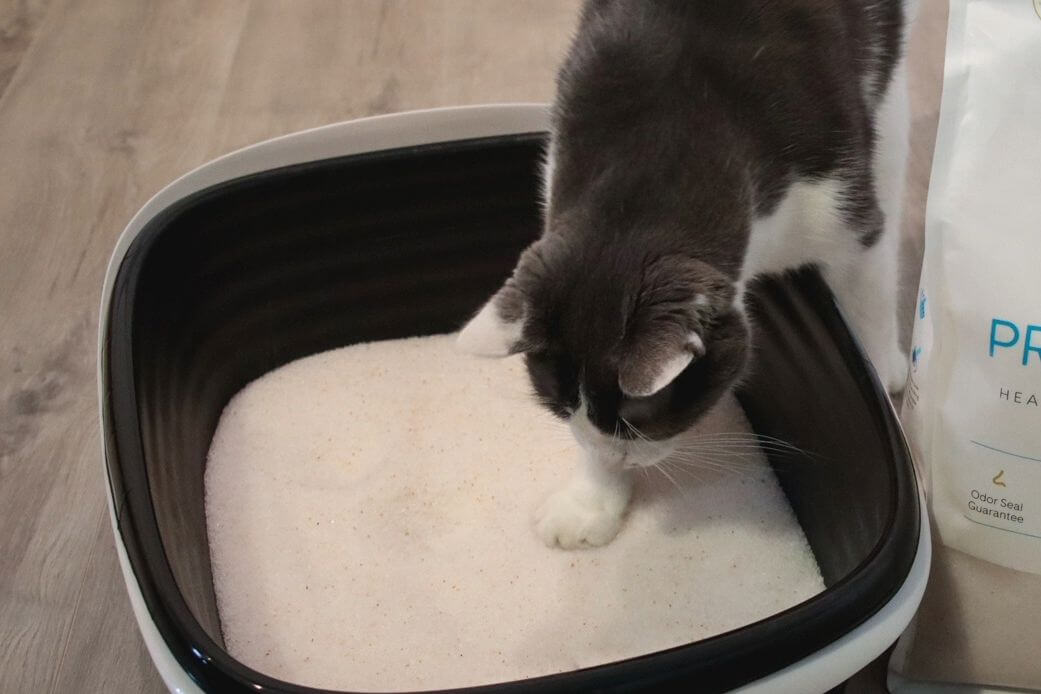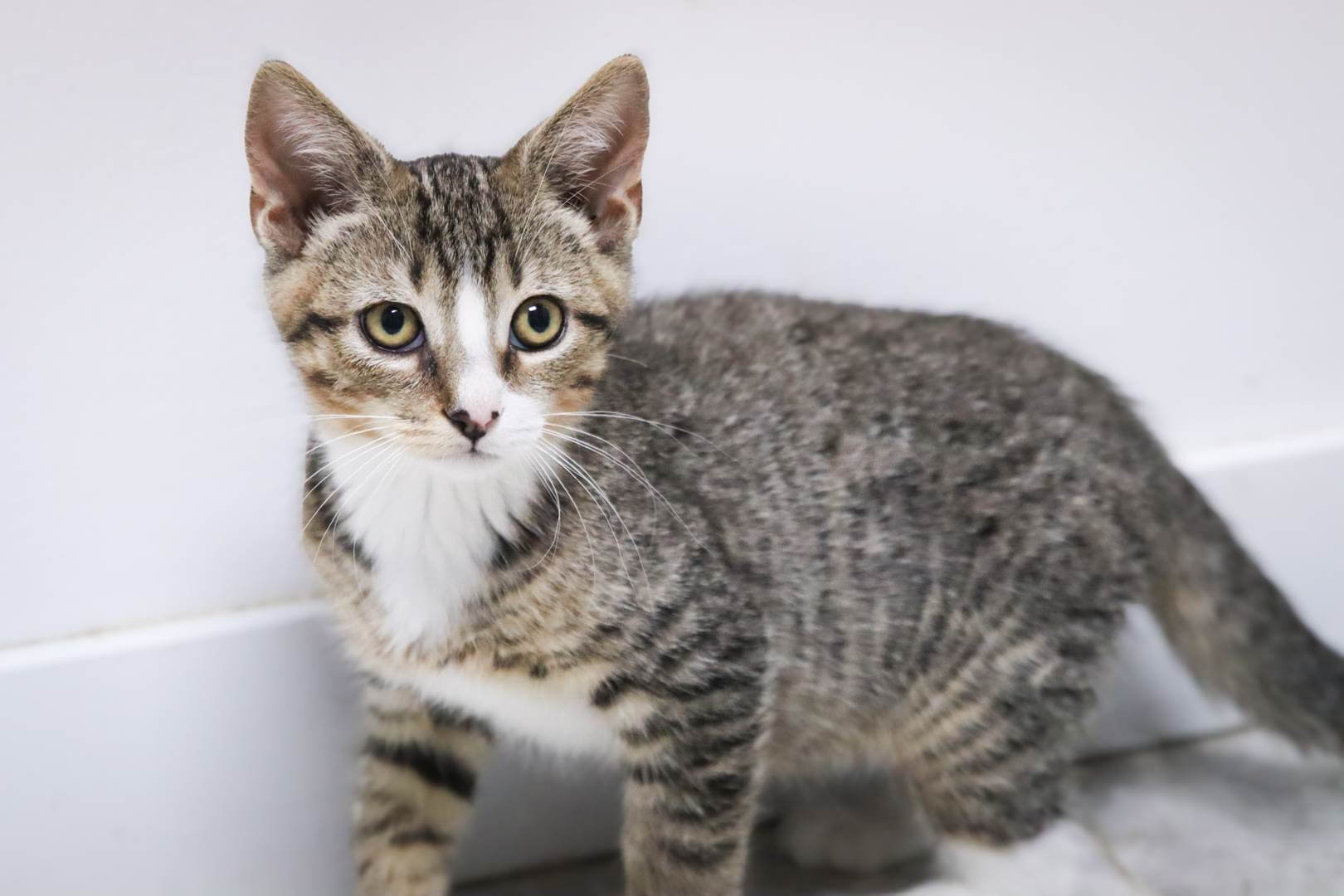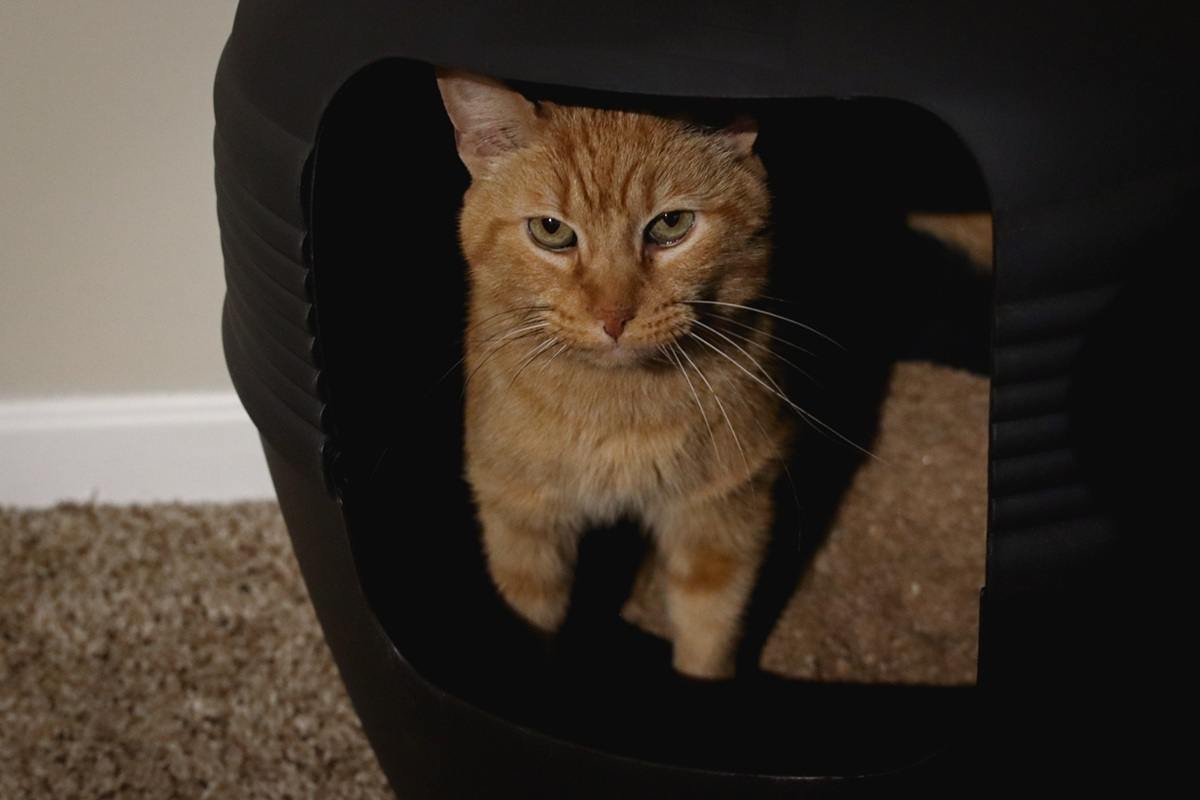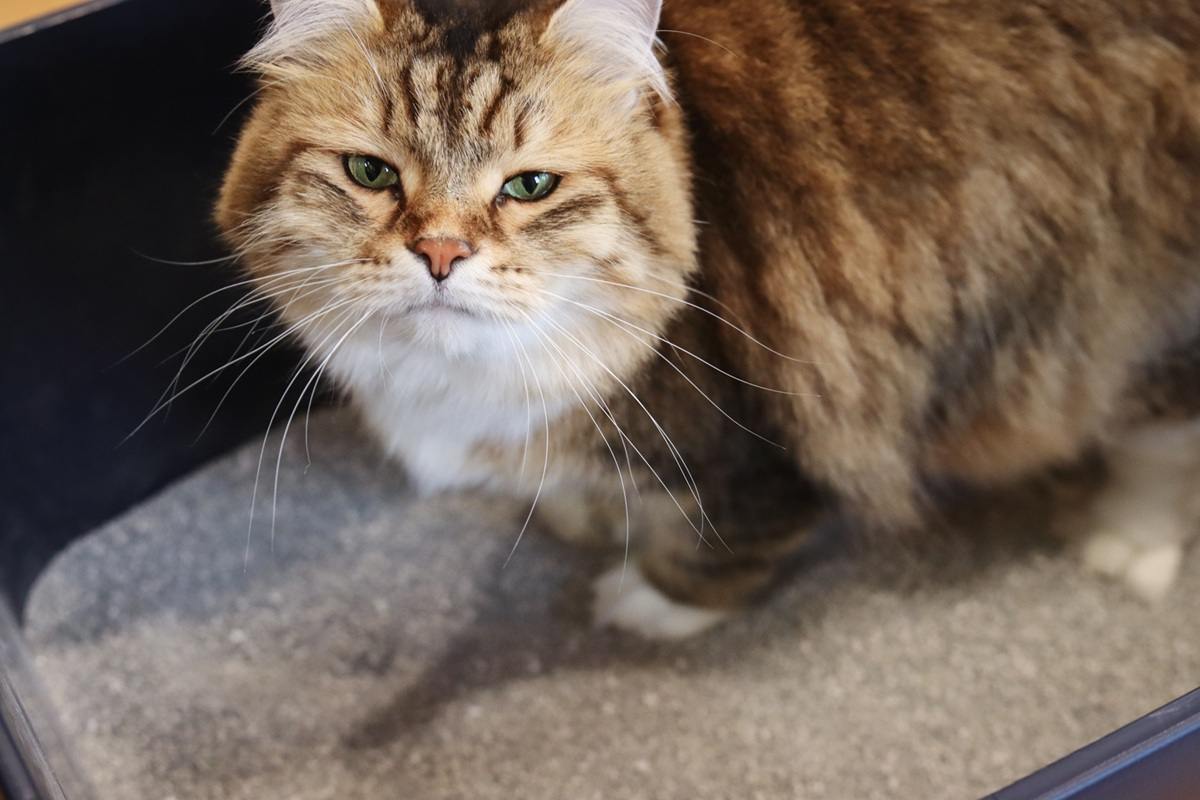
Kirsten McCarthy / Cats.com
Bringing a new kitten home is always an exciting experience. It’s not just fun and cuddles though as you’ll also have to deal with the smellier side of things. During the first few weeks of a kitten’s life, their mother will lick them to stimulate them to pee and poop and then clean them afterward. As they get older, they learn to use a litter box by watching and copying their mother’s behavior.
Knowing the subtle signs that your kitten needs to pee or poop is important for successful toilet training. Signs that kittens might show when they need to pee and poop include vocalization, scratching, and restlessness. Providing an appropriate setup is vital to successful litter box training.Key Takeaways
Luckily, most kittens pick up appropriate toileting habits quickly and are well toilet-trained by the time they join their new families. Having said this, young kittens might still need some guidance during the early days in a new environment.
5 Common Signs Your Kitten Needs to Pee or Poop
Learning the subtle signs that show when your kitten needs to pee or poop can help avoid toileting accidents. Follow these expert tips for toilet training, and pay attention to the times your kitten needs to go.
1. After Waking up and Eating a Meal
Kittens often need to pee or poop after they’ve just woken up or eaten a meal. If you are trying to reinforce good toileting habits and get them used to using their litter box, it’s a good idea to direct them there after they wake up from a nap or eat some food.
2. Urgently Meowing at You

If you hear an insistent cry from your young kitten pick them up and quickly bring them to the litter box. Kirsten McCarthy / Cats.com
If your kitten needs to go to the toilet, they might start meowing and crying out. Meowing is a form of communication that is directed at people. If your kitten starts vocalizing in this way, they are trying to catch your attention and tell you something.
Kittens already have the instinct to keep themselves clean and they prefer to do their business in private so will try to find a suitable place. If they can’t find a litter box or they are prevented access to it, they will cry out for some help from you.
3. Scratching or Pawing at the Floor
Cats instinctively bury their pee and poop. In the wild, covering waste products hides their scent and is a form of protection against predators. It also signals to more dominant cats that they are not a threat or competition. Even though cats have been domesticated for years and are safe in our homes, they still carry this innate behavior within them.
Cats might start scratching and digging before peeing or pooping to create a small hole, which makes it easier to cover their waste after. If you see your kitten scratching or pawing at the floor around them, that is a likely sign that they need the toilet.
4. Appearing Restless
When your kitten has the urge to pass urine or stool, they might feel some discomfort. This can lead to them becoming more active and restless. If your kitten starts having a mad dash, try to stop them from running behind your bed or sofa because they might use that as their bathroom.
5. Squatting To Go
Squatting is a sign that your kitten is about to pee or poop but not one that we would consider “subtle,” unlike the other signs listed above. If you notice your kitten getting into this position, then it’s best to act fast. Try and get them to a nearby litter box as quickly as possible.
How To Set Up Your Cat’s Litter Box

Proper setup is key to ensuring your kitten uses the litter box consistently. Melina Grin / Cats.com
By now, you will be familiar with the signs that your kitten needs to pee and poo. This is just one part of setting up for successful toilet training. Also make sure you provide your kitten with an appropriate litter box setup.
1. Number of Litter Boxes
Have at least one litter box for each cat in the household plus one extra. This allows for more options and reduces competition with other cats. Some cats also prefer to urinate in one and defecate in the other.
2. Choosing the Right Location
Make sure the litter box is in an easily accessible location so your kitten doesn’t have difficulty finding it. Cats like privacy, so choose a quiet area. Remember, cats don’t like toileting close to where they eat and drink, so keep the box away from their water dish and food bowl.
3. Size of the Litter Box

Kittens need a low-sided litter box so they can enter easily. Kirsten McCarthy / Cats.com
The litter tray should be appropriately sized so your kitten can turn around comfortably without touching the sides. It should also be easy for your kitten to get in and out of, with low sides or a ramp for access.
4. Choosing the Best Litter Material
With lots of different types of litter material available, it can take some trial and error to find out which your kitten prefers. Be careful with scented cat litter, as these can be overwhelming for sensitive feline noses. Don’t overdo it with the litter—a small amount is usually sufficient. Try filling the litter box with 1 to 2 inches of litter to start.
5. Address Toileting Accidents Properly
Unfortunately, accidents can happen. As frustrating as this can be, it’s important that you don’t respond by punishing your kitten. This will not help them learn as they won’t understand that their behavior has led to punishment.
It will only damage the relationship you have with them. Instead, praise and reward your kitten when they have used their litter box appropriately. Patience and perseverance are key.
Clean soiled areas thoroughly with an enzymatic pet cleaner to remove pee and poop stains and odors. If not cleaned effectively, the lingering smell might entice your kitten to repeat doing their business in that spot.
Signs That Something Is Wrong

Most kittens instinctively want to use a litter box, so having lots of accidents can be a sign of a health issue. Kirsten McCarthy / Cats.com
It’s normal for young kittens to have accidents here and there, but if your kitten is not using the litter box regularly or is showing signs of illness, something might be amiss.
If you notice any symptoms like diarrhea (liquid poop), constipation, frequent urination or straining in the litter box, changes in appetite, excessive thirst, or lethargy, schedule an appointment with your veterinarian.
With male cats especially, straining without urinating is a serious problem, as this could indicate a urinary blockage, something that is a medical emergency.
Your vet will check your kitten thoroughly looking for any signs of infection (such as a urinary tract infection), intestinal parasites (also called worms), or any other medical problem. If necessary, your veterinarian can prescribe medication such as antibiotics or deworming medication, or recommend further treatment for your kitten.
During the day, look out for signs that your kitty might show if they need to go to the toilet, including vocalization, scratching or pawing the ground, restlessness, and of course, squatting. Recognizing these signs, as well as having an appropriate litter box setup will give you the tools you need to successfully toilet train your kitten.
Frequently Asked Questions
How do you tell if a kitten needs to go to the bathroom?
If your kitten needs to go to the toilet, they might cry out and start scratching the area around them. You might notice them becoming quite active and restless. If they begin to squat, then that’s a sure sign they are about to pee or have a bowel movement in that exact spot unless you intervene.
How often do kittens pee and poop?
Kittens tend to empty their bladder and bowels after they have had a meal. Kittens are usually fed three to four times a day, so you can expect them to pee and poop three to four times as well. This reduces in frequency as they get older.
At what age do kittens start peeing and pooping?
From birth, a kitten requires stimulation from their mother to urinate and defecate. Their mother does this by licking around their rear end. This lasts until they are 3 to 4 weeks of age, when they are then able to pass pee and poop on their own without any help.
Caregivers who are bottle feeding orphaned kittens must also stimulate them to pee and poop after each feeding, using a soft towel or tissues.
-
Atkinson, T. (2018). Practical Feline Behaviour. Oxfordshire, UK: CAB International







